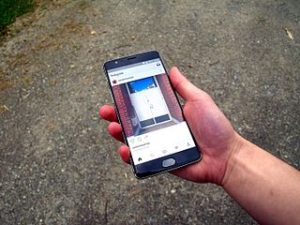
Instagram has said that it is rolling out immersive, full-screen ads in its “Stories” feature for all businesses globally.
“Ads in stories let your business use targeting and reach capabilities that make your ads personally relevant to the people you want to reach. That, paired with measurement tools giving you the confident to know it works, is unmatched in a stories experience,” the company said in a statement.
“Today, businesses of every size around the world can start running ads in Stories through the Marketing API, Power Editor and Ads Manager optimised for reach,” Instagram said.
“By optimising for reach, you can show your ads to the maximum number of people in your audience and control how often they see your ads. The reach objective for ads in Stories will … be available globally in the next few weeks,” it added.
In January, the popular photo sharing app had announced to bring ads in Stories feature to boost advertising revenues. The ad features was being tested with major advertisers such as Nike, GM, and online hospitality service Airbnb. Instagram said that users will see full-screen ads in intervals while swiping through photos and videos on their Instagram Stories dash. The social network also revealed that more than 30 advertisers will be brought into the Instagram Stories. Airbnb ran 15-second video ads in ‘Stories’ to build awareness among people around its product launch.
eMarketer expects Instagram to generate $3.64 billion in worldwide ad revenue in 2017, accounting for 12.3% of Facebook’s global ad business. In the US, Instagram would bring more than 20% of Facebook’s ad revenue. According to eMarketer, about 74% of US firms are planning to use Instagram to advertise their products this year, enabling Instagram to surpass Twitter as a favorite advertising platform. Last year, 53 percent of the US firms used Instagram for advertising their products.
With Instagram Stories, users and businesses can post pictures and videos that would disappear after 24 hours. Introduced in August 2016, this feature is currently used by about 150 million daily active users.
“We saw a double-digit point increase in ad recall from our experiences on Airbnb campaign that further justifies our investment in ads within stories as they have made a measurable impact for us,” said Eric Toda, Global Head of Social Marketing and Content.
“Our ability to apply existing targeting and measurement in an experience to reach the right audience, in the right mindset, with the right story at scale has allowed us to achieve the results we were hoping for in a partnership with Instagram,” Toda added.
Instagram came into existence in 2010. It allows users to take pictures and share them either publicly or privately on the app, as well as through several other social networking platforms. Instagram was created by Mike Krieger and Kevin Systrom as a free mobile app in 2010. The app quickly became popular among internet users, and was able to create an active user base of over 100 million by April 2012. In 2012, Facebook bought it for about US$1 billion in cash and stock. Since then, the app has grown exponentially, due to ease of sharing images. In 2013, Instagram grew by 23%, while Facebook grew only by 3%. In the past two years, Instagram’s user base has more than doubled. It reached 400 million monthly active users in September 2015, and since then it had added another 100 million monthly active users by June 2016. These users were added at a faster rate compared to the previous 100 million users. In June 2016, Instagram hit a new milestone in its history by crossing the 500 million user mark. Instagram also revealed that over 80% of its users were based outside the U.S.
Smartphone users can install Instagram through the Apple App Store and Google Play. It can be run on iPhone, iPad, iPod Touch, Windows 10 devices and Android handsets. Third-party Instagram apps are also available for BlackBerry 10 and Nokia-Symbian Devices.
